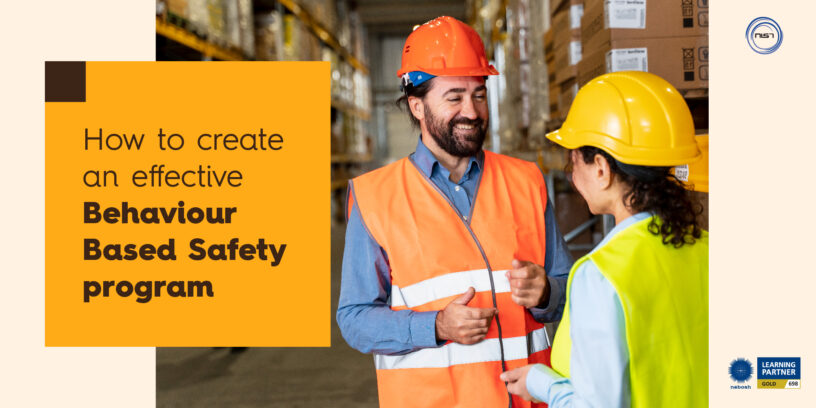The most challenging aspect of establishing an effective Behaviour based safety programme is to change everyone’s way of thinking towards safe behavioural practices, from the upper management to front-line employees. It is human tendency to seek defects or negativity; nevertheless, the goal of Behaviour based safety is to seek out and reward positive behaviours.
Below, we have listed down some of the significant steps to create an effective BBS program:
- Workers who are not enthusiastic about the process will be ineffective in carrying it out. It is more vital to motivate them and make them believe in the process than to force it down their throats.
- Do not “catch them in the act” by eavesdropping on employees to foster a “us vs. them” atmosphere. Better outcomes will result from properly announcing the observation and appreciating good effort.
- Behaviour based safety aims to identify and highlight positive behaviours. Instead of reprimanding employees for unsafe behaviour, use unsafe observations as a teaching opportunity and a chance to identify problems with the activity at hand.
- Make sure the safety team share the information from the BBS observation to inspire the rest of the organisation. If employees don’t see any outcomes or changes being made to their procedures, they won’t be motivated by the programme.
- Keep the big picture in mind at all times. While you want to perform regular observations, you also want to make sure that they are successful. You won’t achieve the results you’re after if your observers are more concerned with filling their quotas than making the workplace safer.
- Every part of our lives is shaped by the surroundings and experiences that humans have, which are products of their environment. Give your staff and the BBS programme some time and space to develop before noticing a change because altering people’s mind-sets and the frameworks they are accustomed to taking shape won’t happen overnight.
- Even though a BBS programme aims to curtail risky behaviour, it’s critical to understand why these actions were taken in the first place. Have a discussion with employees about their actions to attempt and figure out the best way to address the underlying causes.
Nobody anticipates getting hurt at work, but fostering a culture of safety among your employees can significantly lower the likelihood that someone will suffer an injury. One thing to bear in mind if your business is interested in implementing a behaviour-based safety programme is that it is not “us vs. them” situation. Behaviour based safety stands for everyone collaborating to keep one another safe.
Behaviour Based Safety Training / Consultation @ NIST Global
The improvement of overall workplace safety is the main objective of behaviour-based safety training. Discussions about behaviour-based safety concepts, local safety policy compliance, supervisor responsibilities & industrial safety requirements, the policy for safety violations, worker protection methods and strategies take place during behaviour-based safety training programmes.
For Behaviour-based safety training, kindly call our experts @ +91 8754465588 or mail us @ info@nistglobal.com














Leave a Reply